Lew Wallace is widely renowned as the Hoosier author of Ben-Hur, the best-selling novel of the nineteenth century. What many people don’t know is that Lew’s wife, Susan Elston Wallace, was also a well-known writer in her day.
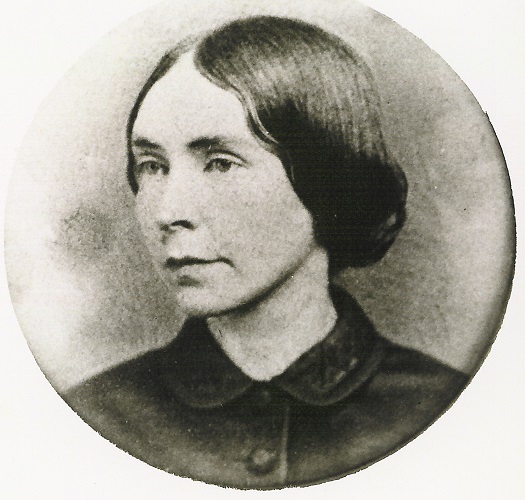
Born on December 25, 1830, Susan was the fourth of nine children born to Maria Aiken and Major Isaac Compton Elston. Major Elston was instrumental in creating a private school where his children could be educated. Susan was described as “petite and studious.” She often climbed to the top of a sturdy bookcase to read, and later retreated to the attic for privacy.
Susan’s mother appreciated and encouraged Susan’s studious nature. In her teens, Susan was sent for either one or two years to a Quaker school in Poughkeepsie, New York, which was run by two sisters, the Misses Robinson. Lew and Susan met in 1849 at a party held in Crawfordsville by her sister. They courted for four years and were married in 1852.
Harper & Brothers published Susan’s first poem, “The Patter of Little Feet,” in February 1858. Over the years, the poem has raised a great deal of speculation. Susan and Lew had one child, Henry Lane Wallace. “The Patter of Little Feet” was such an evocative piece about a parent’s love for her son and loss of her daughter that many readers wondered if they had originally had twins.
The poem itself describes a little boy and his wanderings and play, but one stanza in particular raised questions:
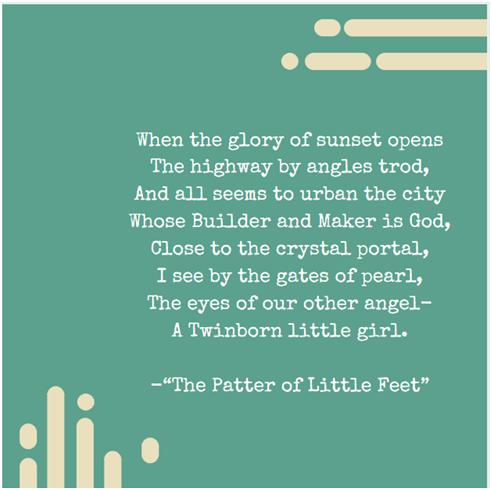 The poem goes on to describe the mother’s longing that she will someday reach heaven and hear the patter of her daughter’s feet on heaven’s floor.
The poem goes on to describe the mother’s longing that she will someday reach heaven and hear the patter of her daughter’s feet on heaven’s floor.
Not only readers but researchers have also been fascinated with the poem. One biography in our research files at the General Lew Wallace Study & Museum states that Susan had twins, but that the daughter died after two days. A paper written about Susan in the 1950s, possibly citing this biography, also makes the same assertion. Wallace scholars have found no cemetery records to support this. Additionally, one Wallace scholar discovered a letter in which Susan referred to the “Twinborn little girl” as a literary invention. Nevertheless, the pathos of her writing certainly complicated scholarly research.
Before the Civil War, Susan’s writings consisted largely of sentimental musings about women and children, flowers, romance, and lives cut short. During and after the war, her writings took a more mature and incisive tone as she continued to write about women and their situation in life.
The poem “Divorced,” written in January of 1868, is a prime example of this:
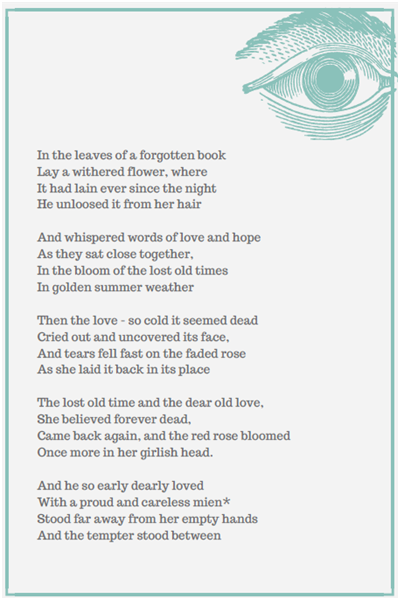
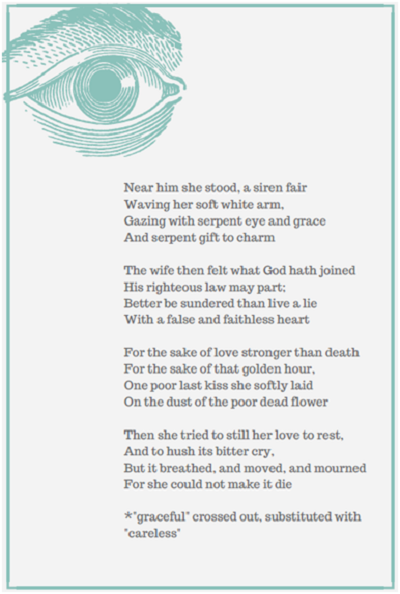 Interestingly, this poem does not seem to have raised any speculation regarding Lew’s faithfulness to Susan.
Interestingly, this poem does not seem to have raised any speculation regarding Lew’s faithfulness to Susan.
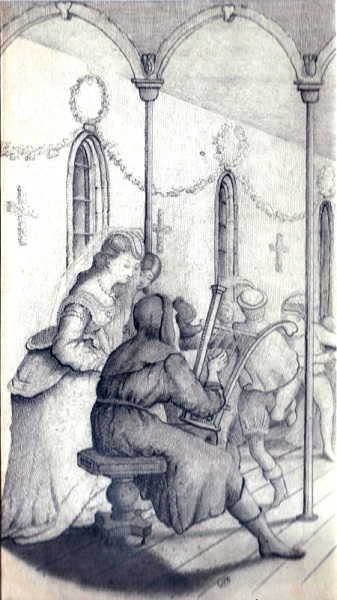
Susan also wrote a great deal of nonfiction about her travels, which originally appeared in weekly and monthly publications. Later, they were collected in her books: The Storied Sea, Land of the Pueblos, Along the Bosphorus, The Repose in Egypt, and The City of the King. (Many of her books are available from Amazon in commemorative edition paperbacks published by the General Lew Wallace Study & Museum.) Her short book Ginevra: A Christmas Story is a gothic story about a young noblewoman and the man she loved. It was published with illustrations by Lew Wallace.
Lew Wallace died in 1905 at the age of 77. After his death, Susan poetically wrote to a relative: “The love of my life is gone. I am now 76 years old and my heart is a tired hour glass. It seems hardly worthwhile to watch the slow dropping of the sands… the past is ever present with me, and though I look through all the faces in the world, I shall never see another like that of my first, last and only love.”
Susan died in Crawfordsville on October 1, 1907, leaving behind an body of literary and nonfiction work overshadowed by that of her husband. Learn more about Susan’s life and work here.
